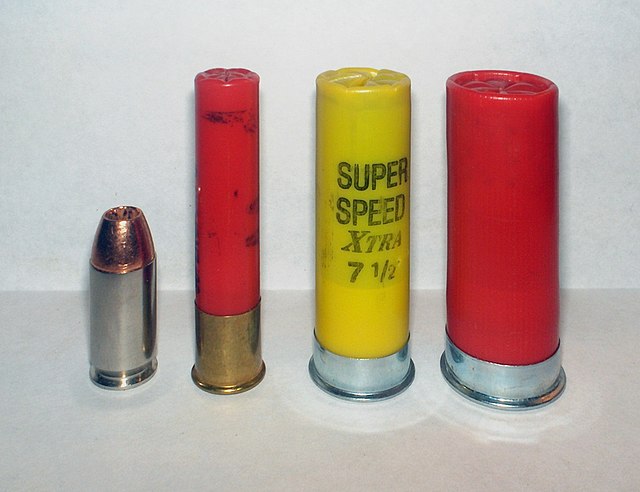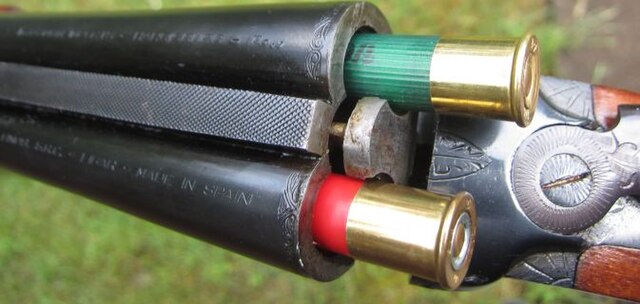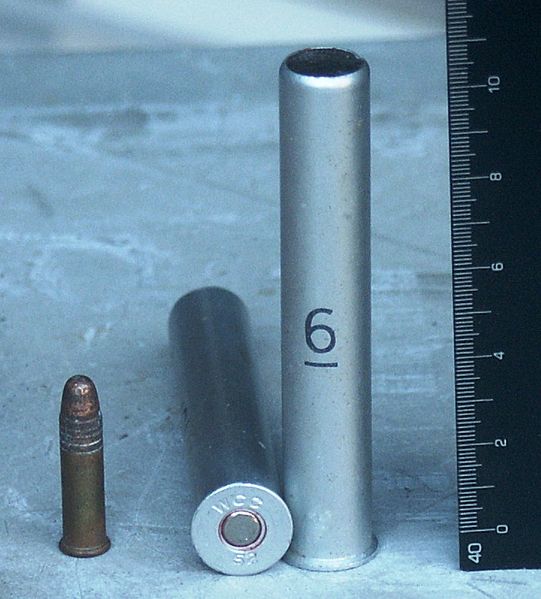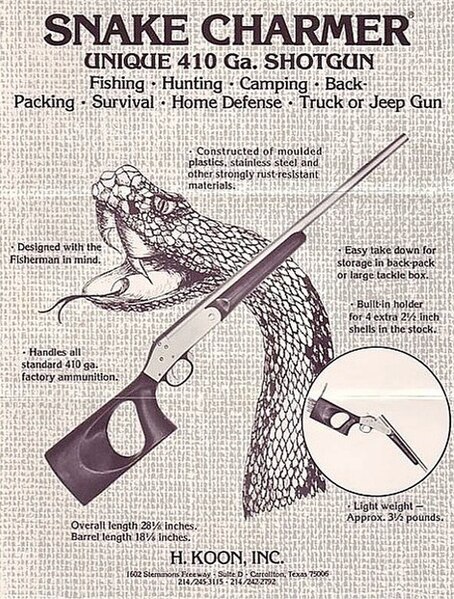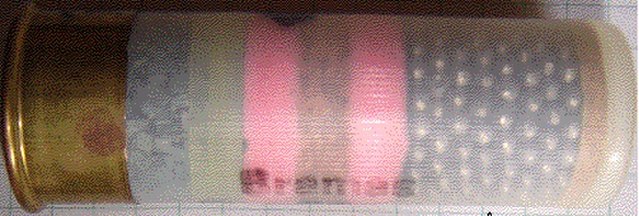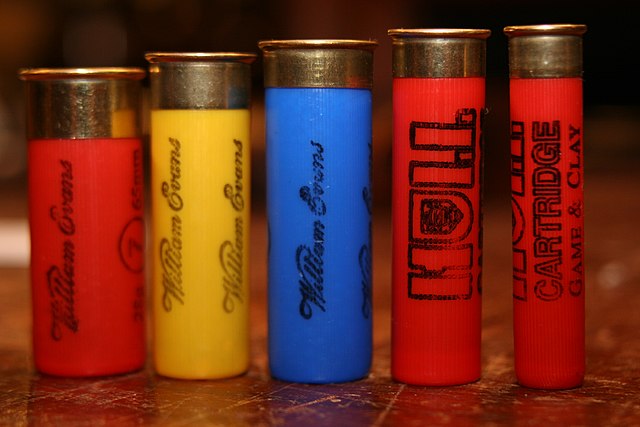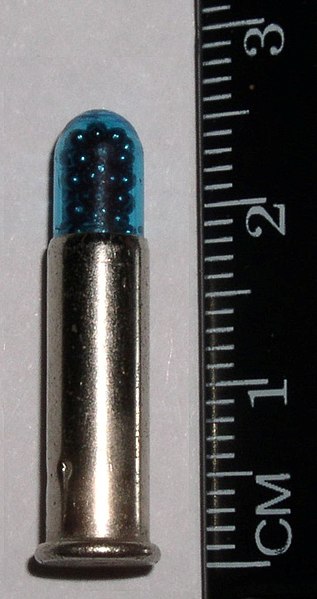The .410 bore (10.4 mm) is one of the smallest caliber of shotgun shell commonly available. A .410 bore shotgun loaded with shot shells is well suited for small game hunting and pest control. The .410 started off in the United Kingdom as a garden gun along with the .360 and the No. 3 bore (9 mm) rimfire, No. 2 bore (7 mm) rimfire, and No. 1 bore (6 mm) rimfire. .410 shells have similar base dimensions to the .45 Colt cartridge, allowing many single-shot firearms, as well as derringers and revolvers chambered in that caliber, to fire .410 shot shells without any modifications.
From left to right: a .45 ACP, a .410 bore shotshell, a 20 gauge shotshell, and a 12 gauge shotshell
Two .410 shells being loaded into a side-by-side double-barrel shotgun
.410-bore M-35 shotgun shells for M6 survival rifle with .22 long rifle for comparison
H. Koon "Snake Charmer" advertisement
A shotgun shell, shotshell, or shell is a type of rimmed, cylindrical (straight-walled) cartridges used specifically in shotguns, and is typically loaded with numerous small, pellet-like spherical sub-projectiles called shot, fired through a smoothbore barrel with a tapered constriction at the muzzle to regulate the extent of scattering. A shell can sometimes also contain only a single large solid projectile known as a slug. The hull usually consists of a paper or plastic tube often covered at the base by a metallic head cover which retains a primer, and the shot charge is typically contained by a wadding/sabot inside the case. The caliber of the shotshell is known as its gauge.
A 12-gauge shotgun shell in a transparent plastic hull, allowing the contents to be seen. From left to right: brass, propellant, over-powder wad, shot wad, #8 birdshot, over-shot wad, and crimp
Shotgun shell comparison (left to right): 12-gauge, 20-gauge, 16-gauge, 28-gauge, and .410 bore
M35 .410 shotgun shells for M-6 survival gun w/.22 long rifle for comparison
CCI .22LR snake shot loaded with #12 shot

